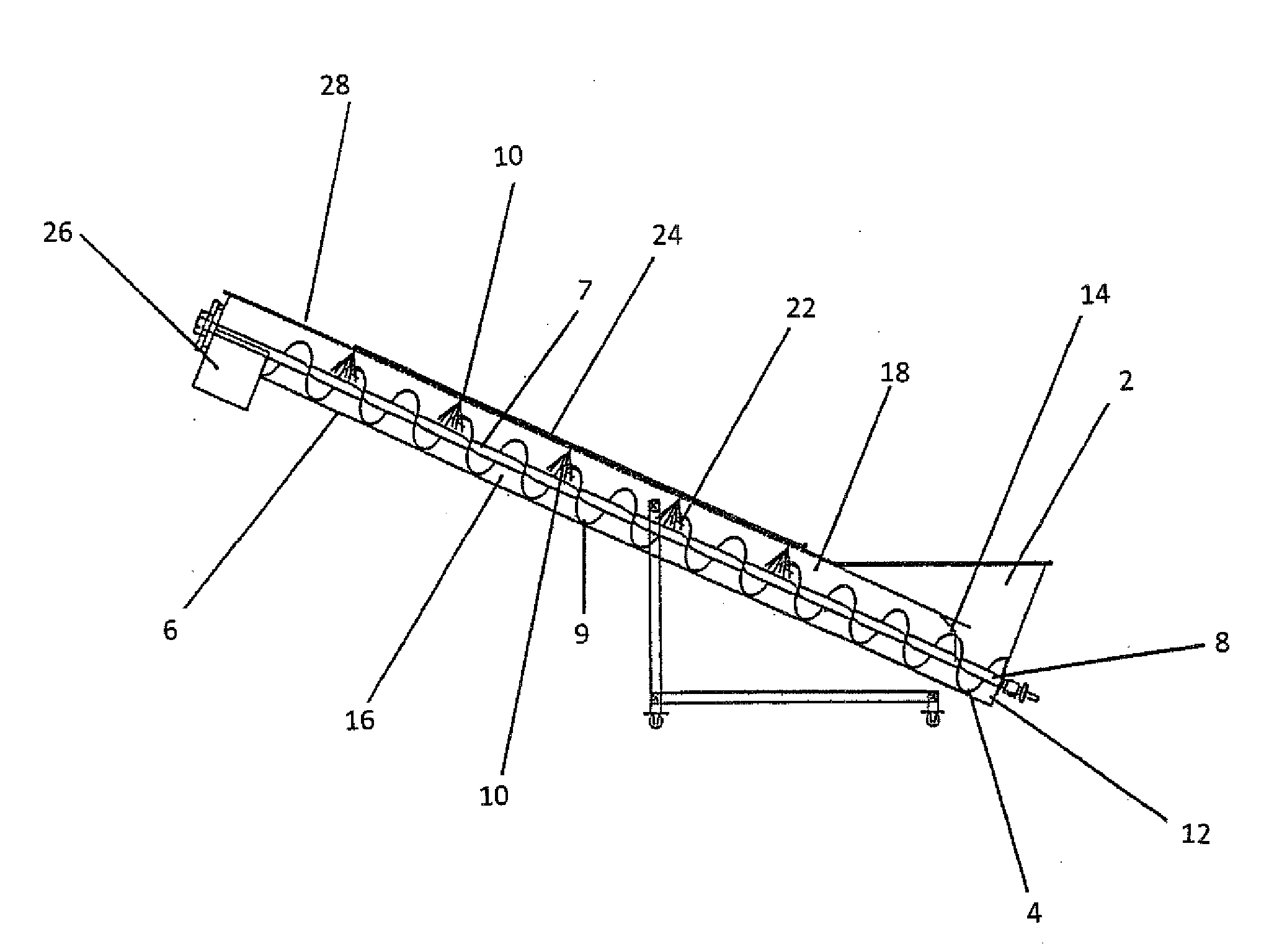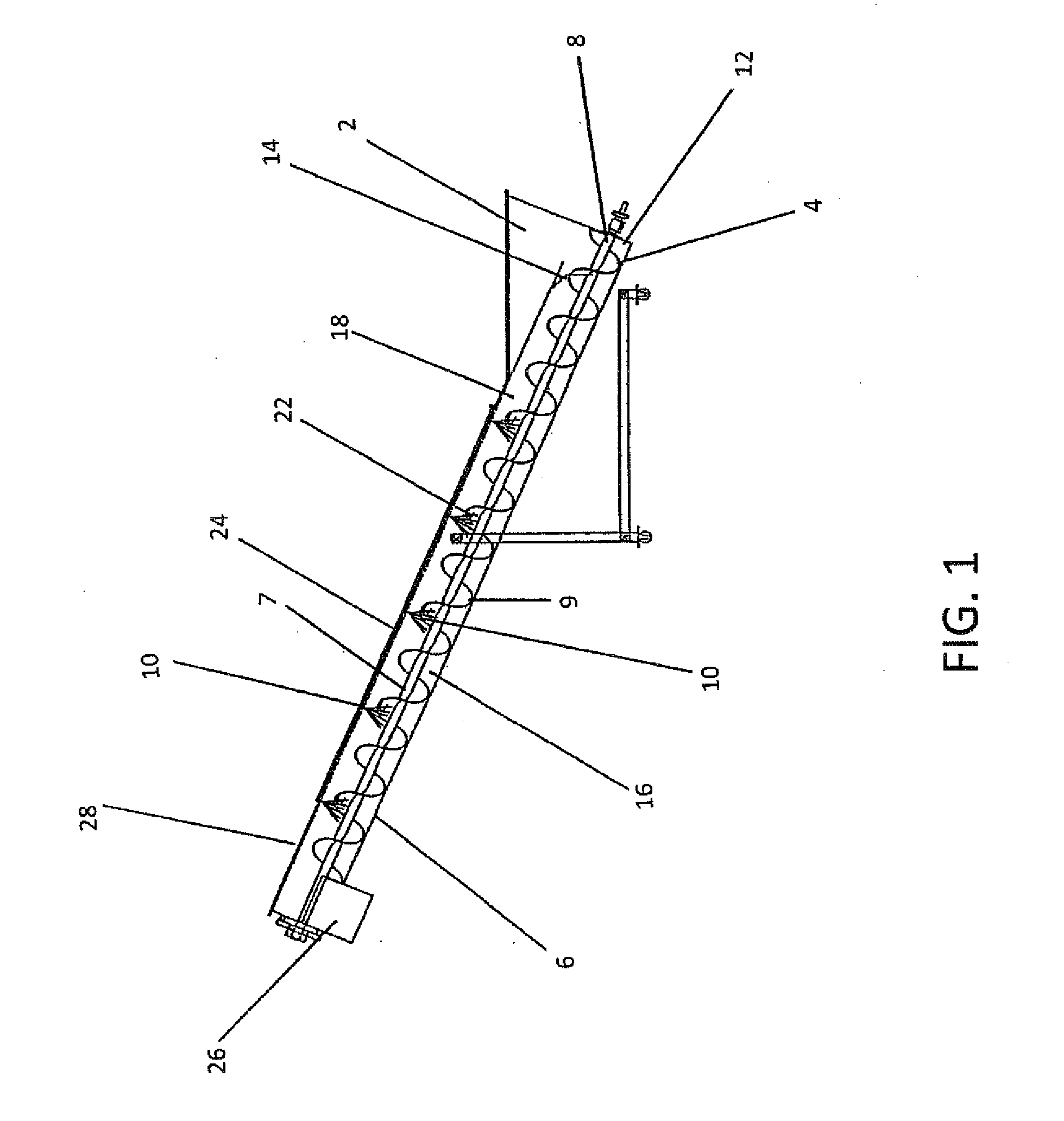Sanitizing of Transported Food Product by Spray Application of Sanitizing Material in an Auger System to Increase Surface Coverage of said Product by said Sanitizing Material during Transport
- Summary
- Abstract
- Description
- Claims
- Application Information
AI Technical Summary
Benefits of technology
Problems solved by technology
Method used
Image
Examples
Embodiment Construction
[0029]The auger system, as illustrated in FIG. 1, is designed to be utilized as a component part of a processing system whereby transported food product is transported from one process to another. When the processes located up-stream from the auger system process their material, it is delivered to an auger hopper 2. The auger hopper 2 is designed to accept the transported food product in a free fall fashion and acts as a collection bin and guide to ensure that the transported food product is fed into an auger collection slot 4 provided at an inlet side of an auger trough 6. The auger trough 6 houses an auger shaft and blade assembly 8 formed by a centrally located shaft 7 with helical flights attached to a helical flight of blades 9. The auger collection slot 4 is formed in the auger trough 6 and its total volume is determined by the design of the spacing and pitch of the blades 9 of the auger shaft and blade assembly 8. The auger collection slot 4 has a continual supply of sanitizi...
PUM
 Login to View More
Login to View More Abstract
Description
Claims
Application Information
 Login to View More
Login to View More - R&D
- Intellectual Property
- Life Sciences
- Materials
- Tech Scout
- Unparalleled Data Quality
- Higher Quality Content
- 60% Fewer Hallucinations
Browse by: Latest US Patents, China's latest patents, Technical Efficacy Thesaurus, Application Domain, Technology Topic, Popular Technical Reports.
© 2025 PatSnap. All rights reserved.Legal|Privacy policy|Modern Slavery Act Transparency Statement|Sitemap|About US| Contact US: help@patsnap.com


